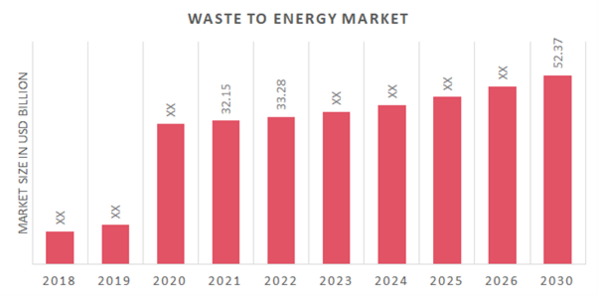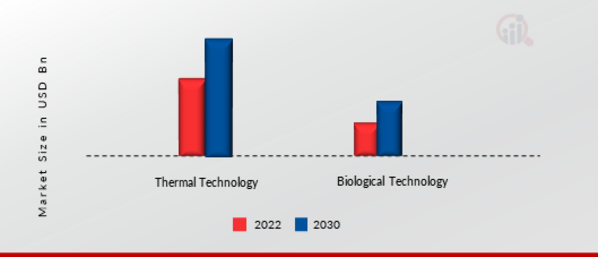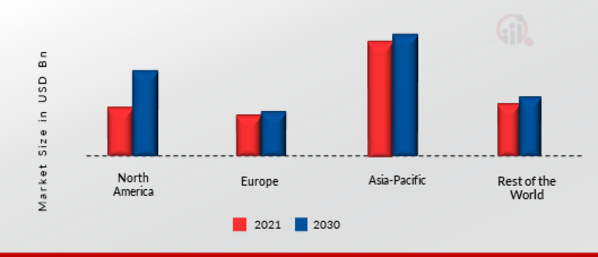Certified Global Research Member


Key Questions Answered
- Global Market Outlook
- In-depth analysis of global and regional trends
- Analyze and identify the major players in the market, their market share, key developments, etc.
- To understand the capability of the major players based on products offered, financials, and strategies.
- Identify disrupting products, companies, and trends.
- To identify opportunities in the market.
- Analyze the key challenges in the market.
- Analyze the regional penetration of players, products, and services in the market.
- Comparison of major players’ financial performance.
- Evaluate strategies adopted by major players.
- Recommendations
Why Choose Market Research Future?
- Vigorous research methodologies for specific market.
- Knowledge partners across the globe
- Large network of partner consultants.
- Ever-increasing/ Escalating data base with quarterly monitoring of various markets
- Trusted by fortune 500 companies/startups/ universities/organizations
- Large database of 5000+ markets reports.
- Effective and prompt pre- and post-sales support.
Global Waste to Energy Market Overview:
Waste to Energy Market Size was valued at USD 32.15 Billion in 2021. The Waste to Energy Market industry is projected to grow from USD 33.28 Billion in 2022 to USD 52.37 Billion by 2030, exhibiting a compound annual growth rate (CAGR) of 5.20% during the forecast period (2024 - 2030). Waste to Energy (WtE), also known as energy from waste, uses thermochemical and biochemical technologies to recover energy from urban waste, producing electricity, steam, and fuels. These new technologies can reduce the original waste volume by 90%, depending on the composition and use of outputs. WtE plants offer two significant benefits: environmentally safe waste management and disposal and clean electric power generation. The growing use of WtE as a method to dispose of solid and liquid wastes and produce electricity has dramatically reduced the environmental impacts of municipal solid waste management, including emissions of greenhouse gases.

Source: Secondary Research, Primary Research, MRFR Database and Analyst Review
Waste to Energy Market Trends
-
Increase in Production of Clean Energy from Waste to boost market growth
The increasing industrialization and urbanization, accompanied by economic growth, results in waste generation, environmental threats, and carbon dioxide (CO2) emissions. The commercial and residential waste era has also increased significantly, with changes in people's life patterns. Waste to energy has a role to play in achieving the transformation to a sustainable energy ecosystem acting as an energy source to reduce greenhouse gas (GHG) emissions, a clean demand response option, a design consideration of eco-industrial parks, and sometimes the only option for end-of-life waste treatment.
Additionally, the continuously rising demand for energy ly due to the increasing population and rapid industrialization and urbanization is one of the critical drivers of the market. For example, per the Asian development bank WtE circular research report, the amount of waste produced from municipal waste is projected to reach 3.4 billion tons by 2050 due to economic development, population growth, and urbanization. Thereby, significant investment in project processes is being initiated to reduce environmental concerns and waste, providing growth opportunities for the waste to energy industry. For example, in July 2022, Hanoi, the Capital of Vietnam, aimed to recycle at least 80 percent of household solid waste into power by 2025. The city has received six project proposals with a total handling capacity of about 10,500 tons of waste.
Waste to Energy Market Segment Insights:
Waste to Energy by Technology Insights
The Waste to Energy Market segmentation, based on technology, includes Thermal Technology and Biological Technology. Waste to Energy Market is segmented as biochemical and thermal energy. Thermal energy is the process of combustion of homemade or organic waste using gasification or pyrolysis and converting it into gas, fuel, or heat. Biochemical energy on the other hand deals with the fermentation of chemical waste from industries involving waste materials like methanol, ethanol, etc., and converting it into biogas. The amount of oxygen used and the temperature to which waste is heated is the basis of the segmentation of these two types of energy resulting in the amount of water and carbon dioxide production.
Figure 2: Waste to Energy Market, by Technology, 2024 & 2030 (USD Billion)

Source: Secondary Research, Primary Research, MRFR Database and Analyst Review
Waste to Energy Regional Insights
By region, the study provides market insights into North America, Europe, Asia-Pacific, and the Rest of the World. The Asia Pacific region dominates the market owing to increasing economic activities, resulting in increased waste production. Furthermore, various governments are supporting the establishment of WtE facilities, which will result in the dominating share of Asia Pacific in the forecast timeframe.
In addition to Asia Pacific, Europe has a very mature market owing to the presence of various waste to energy facilities/plants along with an increasing amount of energy generation and valuable materials for recycling from municipal solid waste.
Figure 3: Waste To Energy Market Share By Region 2021 (%)

Source: Secondary Research, Primary Research, MRFR Database and Analyst Review
North America will hold a significant share of the market outlook in the forecast period due to substantial waste generation and a rising focus on managing waste. For example, according to the latest figures from the U.S. Environmental Protection Agency, the EPA’s accepted best practice to sustainably manage solid wastes mainly focuses on factors such as waste source reduction and recovery, energy recovery, treatment, and disposal, among others.
Moreover, countries across the Middle East & Africa and Latin America are experiencing a significant increase in waste to energy plants with the growing trend of a circular economy, which majorly focuses on waste management.
Waste to Energy Key Market Players & Competitive Insights
Major market players are spending a lot of money on R&D to increase their product lines, which will help the Waste to Energy Market grow even more. Market participants are also taking a range of strategic initiatives to grow their worldwide footprint, with key market developments such as new product launches, contractual agreements, mergers and acquisitions, increased investments, and collaboration with other organizations. Competitors in the Waste to Energy industry must offer cost-effective items to expand and survive in an increasingly competitive and rising market environment.
The major market players are investing a lot of money in R&D to expand their product lines, which will spur further market growth for Waste to Energy. With significant market development like new product releases, contractual agreements, mergers and acquisitions, increased investments, and collaboration with other organizations, market participants are also undertaking various strategic activities to expand their presence. To grow and thrive in a market climate that is becoming more competitive and growing, competitors in the Waste to Energy industry must offer affordable products.
Manufacturing locally to cut operating costs is one of the main business tactics manufacturers use in the Waste to Energy industry to benefit customers and expand the market sector. The Waste to Energy Market has recently given medicine some of the most important advantages. Major hair care product market players, including Johnson and Johnson, L'Oreal SA, Unilever, Henkel AG & Co. KGaA, Procter & Gamble, and others, are attempting to increase market demand by funding R&D initiatives.
The American firm Johnson & Johnson (J&J), established in 1886, creates consumer packaged goods, pharmaceuticals, and medical equipment. The brands owned by Johnson & Johnson include many well-known prescription drugs and first aid products. The Band-Aid Brand line of bandages, Tylenol pharmaceuticals, Johnson's Baby products, Neutrogena skin and beauty products, Clean & Clear face wash, and Acuvue contact lenses are just a few of its well-known consumer goods. In July 2022, The Johnson & Johnson Company introduced VIVVI & BLOOM, a new skin and hair care line created especially for infants and toddlers of all ages.
Also, William Procter and James Gamble formed the Procter & Gamble Company (P&G), an American international consumer goods firm headquartered in Cincinnati, Ohio, in 1837. It focuses on a broad range of consumer health, personal care, and hygiene items. These products are divided into several categories: baby, feminine, family care, beauty, grooming, and health care. In August 2021, The Nou ethnic hair care range was introduced by Procter & Gamble with Gen Z in mind. Walmart.com currently sells the Nou brand, and shops are reportedly about to follow. The product line consists of conditioners, shampoos, and hair oils.
Key Companies in the Waste to Energy Market includes
- Veolia
- Huawei Enterprise
- China Everbright Limited
- Wheelabrator Technologies Inc.
- SUEZ
- Covanta
- EDF
- Ramboll Group
- AVR
- Allseas
Waste to Energy Industry Developments
June 2022:AVR decided to explore the possibility of locally managing its hazardous flue gas cleaning residues by partnering with Swedish company HaloSep AB. The HaloSep operation is a distinct solution that turns hazardous waste into harmless and helpful snatches. Choosing HaloSep's solution would make AVR in Rotterdam more circular by recovering material resources and reducing the plant's environmental footprint.
April 2022:Viridor announced the sale of its landfill and landfill gas business to Frank Solutions Limited. The deal involves the operation and management of 44 sites across the U.K. The deal will enable Viridor to continue delivering the strategy of growing its core business areas of energy recovery and polymer reprocessing while pushing ahead with its plans to be net zero by 2040.
Waste to Energy Market Segmentation
Waste to Energy Technology Outlook
- Thermal Technology
- Biological Technology
Waste to Energy Regional Outlook
- North America
- US
- Canada
- Europe
- Germany
- France
- UK
- Italy
- Spain
- Rest of Europe
- Asia-Pacific
- China
- Japan
- India
- Australia
- South Korea
- Australia
- Rest of Asia-Pacific
- Rest of the World
- Middle East
- Africa
- Latin America
Leading companies partner with us for data-driven Insights
Kindly complete the form below to receive a free sample of this Report
Tailored for You
- Dedicated Research on any specifics segment or region.
- Focused Research on specific players in the market.
- Custom Report based only on your requirements.
- Flexibility to add or subtract any chapter in the study.
- Historic data from 2014 and forecasts outlook till 2040.
- Flexibility of providing data/insights in formats (PDF, PPT, Excel).
- Provide cross segmentation in applicable scenario/markets.





















